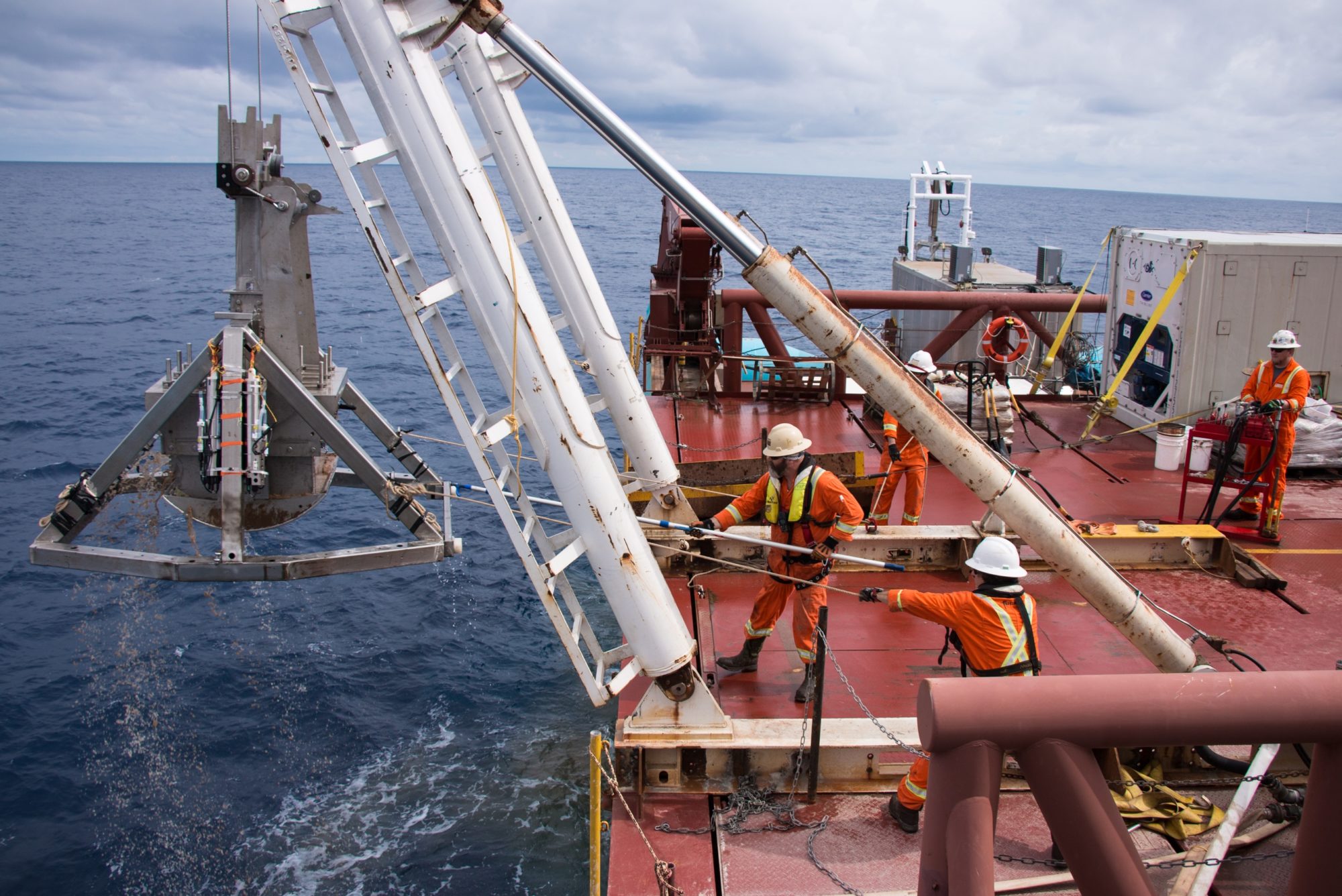DeepGreen Metal’s research vessel, the Maersk Launcher, has returned to port in San Diego after nearly two months at sea. This is the third of seven campaigns to pursue the evaluation of deep ocean metals, which, the company says, “will be indispensable for powering a low-carbon and high-tech economy — battery storage systems, electric vehicles, smart phones, wind turbines and solar panels.”
All campaign objectives were met, and the program was completed safely. The program undertook detailed mapping of the seafloor using a state-of-the-art Hugin 1000 AUV (Autonomous Underwater Vehicle), with a sensor package comprised of a multibeam echosounder, side scan sonar, sub-bottom profilers and high-resolution camera. Box core samples were also taken which provide an accurate representative sample of the seafloor used for resource, environmental base line and geotechnical purposes.
The purpose of this campaign was to select and map in detail the location of a mechanised collector test which is planned to be conducted in a future campaign as well as mapping two preservation reference areas. These surveys and samples will be used to inform detailed collector design, improve resource definition for production planning purposes and will form part of the environmental baseline studies.
The results are astounding, producing detailed maps with up to 20 cm resolution with 2,286 line km of data collected. Photo traverses confirm continuous fields with high polymetallic nodule abundance and initial review of box core samples indicates abundances greater than previous estimates. Laboratory analysis will be conducted over the coming months as will detailed interpretation of the more than 50 terabytes of data that was collected during the campaign.
The research results, which were carried out 4 km below the surface, confirm abundant seafloor polymetallic nodules, which prior analysis shows contain essential metals such as cobalt, nickel, copper and manganese. The ship is operated by Maersk Supply Services in alliance with the company’s subsidiary, Nauru Ocean Resources, Inc (NORI).
DeepGreen and NORI are developing technology that will allow them to collect the polymetallic nodules lying on top of the ocean floor, bring them to the surface using state-of-the-art technology and process them with the objective of producing zero-waste.
DeepGreen and NORI stand out for their commitment to ensuring that their operations are preceded by the necessary science to ensure that these metals for our future can be obtained in an environmentally sound and sustainable way.
“This campaign has been a success and we will move forward with our plan to carry out the necessary science, resource delineation and engineering required to complete our prefeasibility and feasibility study,” said Gerard Barron, CEO of DeepGreen. “With our partners Maersk and the underwater mapping company, Fugro, we have successfully brought thousands of polymetallic nodules to the surface and completed vital mapping of this resource. This is a major step in DeepGreen’s quest to bring the world an economically reliable and environmentally sustainable supply of the metals for our future.”
The two-month campaign, overseen by DeepGreen’s subsidiary, NORI, has carried out extensive scientific and resource surveys within part of a 75,000-km2 area of the Eastern Pacific’s abyssal plain, contracted to NORI by the United Nations’ International Seabed Authority (ISA).
“The voyage with Maersk Launcher yielded encouraging insight into the nodules and the environment. It is great to see our vessel and project management skills being utilized in a new industry, supporting our diversification journey. We look forward to continuing the collaboration on- and offshore with DeepGreen in the upcoming campaigns,” says Jonas Munch Agerskov, Chief Strategy officer in Maersk Supply Service and board member at DeepGreen.
Additionally, Edward J. Saade, President of Furgo USA, shared, “We are excited and proud to support DeepGreen on this important project. We were able to successfully complete several ground-breaking tasks during the course of this deployment, while continuously operating at these depths. We are looking forward to seeing the conclusions derived from the analyses of the various data collected.”











